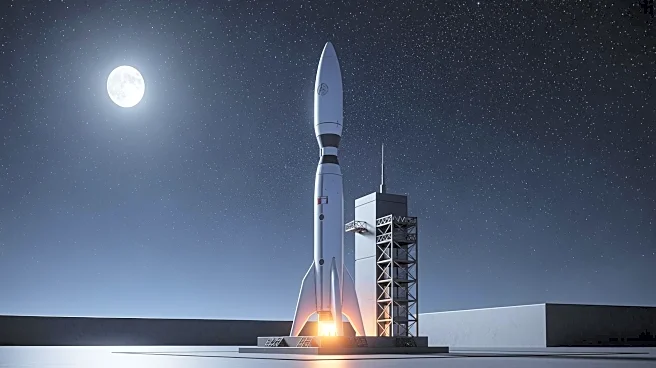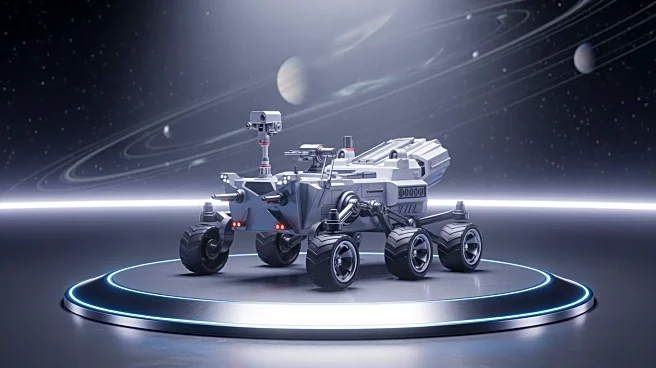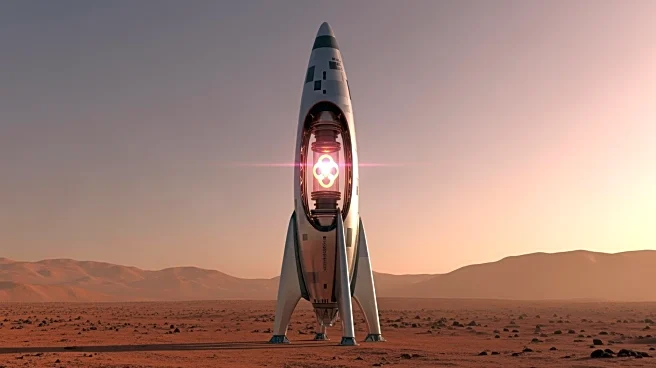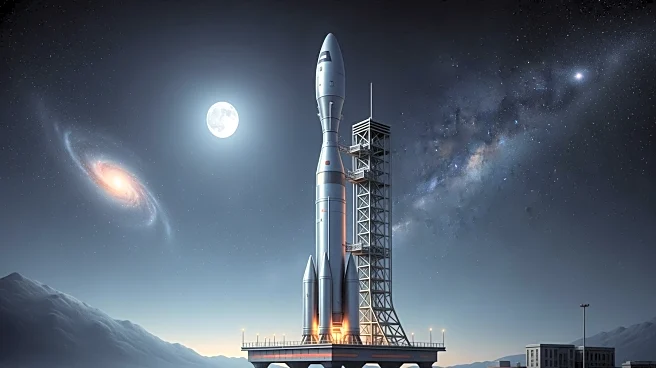What's Happening?
Blue Origin has pledged to expedite NASA's return to the lunar surface, aiming to accelerate the Artemis program amid competition with China. CEO Dave Limp emphasized the company's readiness to adapt its
Blue Moon lander for an earlier Artemis III mission, potentially reshaping timelines to counter China's lunar ambitions. Blue Origin is advancing its Blue Moon Mark 2 lander, with plans to deliver NASA's VIPER rover to the Moon's South Pole by 2026. The company is also developing in-space refueling and zero-boiloff propellant technology to support sustained lunar operations.
Why It's Important?
The acceleration of NASA's lunar missions is significant in the context of international space competition, particularly with China aiming for crewed Moon missions by 2030. Blue Origin's efforts to expedite lunar landings could enhance U.S. space leadership and innovation. The company's technological advancements, including partnerships with major aerospace firms, could bolster NASA's Artemis program and contribute to establishing a permanent lunar presence.
What's Next?
Blue Origin's proposals to NASA could integrate with the Commercial Lunar Payload Services (CLPS), potentially leading to earlier lunar missions. The company's focus on developing sustainable lunar infrastructure and technology could pave the way for future collaborations and missions beyond the Moon, including Mars exploration. The success of these initiatives will depend on overcoming technical challenges and maintaining competitive timelines.
Beyond the Headlines
The geopolitical stakes of lunar exploration highlight the strategic importance of space technology in national security and international relations. Blue Origin's commitment to accelerating lunar missions reflects broader industry trends towards collaboration and competition in space exploration. The company's technological innovations could have long-term implications for sustainable space operations and international partnerships.











